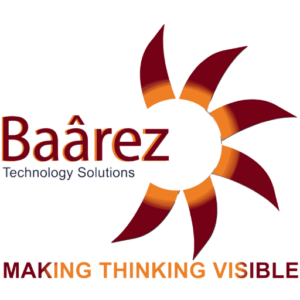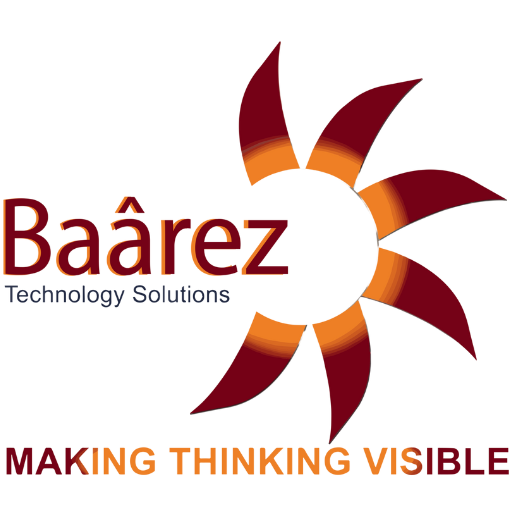
In today’s interconnected business landscape, organizations increasingly rely on third-party vendors to perform essential services, provide critical infrastructure, and deliver key components of their business operations. This reliance, however, introduces a spectrum of risks that can impact organizational performance, data security, compliance status, and overall reputation. Understanding and effectively managing these risks through third-party risk management (TPRM) is not just a necessity; it is imperative for maintaining business continuity, security, and competitiveness.
Table of Contents
ToggleWhat is Third-Party Risk Management?
Third-party risk management refers to the process by which organizations identify, assess, monitor, and control the risks presented by external entities with whom they engage in business. This encompasses vendors, partners, suppliers, and any other non-internal parties that contribute to an organization’s operations. TPRM aims to mitigate risks that can arise from these third-party engagements, including breaches of data, operational disruptions, non-compliance with regulations, and other security threats.
What Makes a Third-Party Risk Management Program Successful?
A successful third-party risk management program is characterized by a few key elements:
- Comprehensive Risk Assessment: Regularly evaluating the potential risks associated with each third-party vendor.
- Customized Risk Strategies: Tailoring risk management strategies to the specific risks and business context of each third party.
- Continuous Monitoring: Keeping an ongoing watch on third-party activities and risk exposures.
- Effective Communication: Ensuring clear and consistent communication between the organization and its third parties regarding expectations, performance, and risk management practices.
What are the Common Problems Third-Party Risk Management Programs Have?
Common challenges in third-party risk management include:
- Inadequate Due Diligence: Insufficient background checks and risk assessments before engaging with a third party.
- Lack of Visibility: Poor oversight of third-party operations and their compliance with agreed standards.
- Static Risk Assessments: Not updating risk assessments as business needs and external environments evolve.
- Fragmented Responsibility: Unclear roles and responsibilities for managing third-party risks across organizational units.
Read more about The Ultimate Guide to Third-Party Risk Assessments >
How to Use Security Ratings to Measure Third-Party Risk
Security ratings serve as a data-driven, objective, and dynamic measurement of an organization’s security performance. By using these ratings, businesses can quantify the security posture of their third-party vendors, monitor changes over time, and make informed decisions about risk management priorities.
What Are Third-party Vendors and How Are They Shaping Risk Management?
Third-party vendors are external organizations that supply goods, services, or support to main businesses. They are shaping risk management by introducing varied and complex risks that require sophisticated management strategies and tools to address effectively.
What Risks Do Third Parties Introduce to a Business?
Third parties can introduce several types of risks:
- Cybersecurity Risks: Data breaches, unauthorized data access, and other IT security issues.
- Operational Risks: Failures in service delivery or disruptions in supply chains.
- Reputational Risks: Damage to reputation due to the actions or failures of a third party.
- Compliance Risks: Failure to adhere to laws and regulations, which can result in fines and legal issues.
- Financial Risks: Unexpected costs arising from third-party failures or liabilities.
Read more about Data-Driven TPRM: Mitigating Ransomware Risks >
What Is a Third-party Risk Management Framework?
A third-party risk management framework is a structured approach that outlines the processes and procedures for identifying, assessing, monitoring, and mitigating risks associated with third parties. It integrates best practices and compliance requirements, providing a roadmap for effective risk management.
What Are Managed TPRM Service Platforms?
Managed TPRM service platforms are comprehensive software solutions that automate and facilitate the various phases of the third-party risk management lifecycle. These platforms help organizations efficiently scale their risk management efforts and improve accuracy and effectiveness in identifying and mitigating risks.
Third-party or Vendor Risk Management Checklist
For organizations looking to establish or refine their TPRM processes, the following checklist can provide a foundational guide:
- Identify and Prioritize Third-party Relationships: Understand who your third parties are and rank them based on the level of risk they pose.
- Conduct Risk Assessments: Regularly perform detailed risk assessments for each third-party relationship.
- Draft and Enforce Strong Contracts: Include detailed service and compliance expectations, along with penalties for breaches.
- Establish Clear Communication Channels: Ensure that there are open lines of communication for addressing issues as they arise.
- Implement Continuous Monitoring: Use tools and technologies to monitor third-party performance and compliance continuously.
- Develop Incident Response Plans: Prepare for potential third-party breaches or failures with proactive incident response strategies.
Read more about Third-Party Risk Management Tools >
Do Not Take Third-party Risk for Granted
Ignoring third-party risk can lead to significant operational disruptions, legal liabilities, financial losses, and reputational damage. Organizations must prioritize robust third-party risk management practices to safeguard their interests and maintain trust with stakeholders.
Objectives Of Third Party Risk Management
The primary objectives of TPRM include:
- Minimizing Risk Exposure: Reducing vulnerabilities and potential impacts from third-party engagements.
- Ensuring Compliance: Meeting regulatory requirements and industry standards.
- Protecting Organizational Assets: Safeguarding data, intellectual property, and other valuable assets.
- Enhancing Operational Efficiency: Streamlining and optimizing third-party contributions to business operations.
- Risks Associated With Cybersecurity: TPRM must address various cybersecurity threats, including data breaches, ransomware attacks, and other malicious activities that can compromise data integrity and confidentiality.
- Operational Risks: These include disruptions in essential services or supply chain failures that can halt business operations.
- Reputational Risks: Negative events associated with third parties can adversely affect a company’s public perception and trustworthiness.
- Risks Associated With Local Laws, Regulations, And Compliance: Non-compliance can result in significant penalties, legal issues, and operational restrictions.
- Financial Risks: Unanticipated expenses due to third-party failures or contractual breaches can impact financial stability.
Best Practices For Third Party Risk Management
- Maintain a third party Inventory: Keeping an updated list of all third-party vendors and their details is crucial for effective risk management.
- Understand the TPRM Lifecycle: Recognizing the stages from vendor selection through to offboarding helps in managing risks throughout the vendor relationship.
Read more about What Is Third Party Risk Management >
Factors To Take Into Account While Onboarding A Vendor
Effective vendor onboarding is critical to minimizing risks from the outset. When integrating a new third-party provider, organizations should consider several key factors:
- Security Posture: Evaluate the vendor’s security measures and their alignment with your organization’s cybersecurity standards.
- Compliance Track Record: Check the vendor’s history of compliance with industry regulations and standards relevant to your sector.
- Financial Stability: Assess the financial health of the vendor to ensure they can deliver on contractual obligations over the long term.
- Operational Reliability: Review the vendor’s operational performance metrics to gauge their capability to meet service level agreements (SLAs).
- Cultural Fit: Ensure the vendor’s corporate culture and values align with those of your organization to foster a smooth partnership.
Managing Third Party Risks
To manage third-party risks effectively, organizations must develop a robust framework that includes detailed risk assessments, ongoing monitoring, and responsive mitigation strategies.
Understanding and Mitigating Third-party Risk in the Healthcare Sector
In healthcare, where patient data privacy and security are paramount, TPRM is particularly complex. Healthcare organizations must ensure that third parties comply with HIPAA regulations and protect sensitive health information against breaches. This involves conducting thorough risk assessments and insisting on rigorous data security measures from all partners.
The Challenge of Third-party Management
Managing an array of third-party relationships presents operational challenges, particularly in scaling risk management processes to match the diversity and volume of third-party engagements. Organizations must leverage technology and adopt a tiered approach to risk management, focusing efforts where they are most needed.
Vendor Risk Management Maturity Levels
To enhance their TPRM capabilities, organizations can aim to progress through various maturity levels:
- Initial: Basic management processes are in place but are ad hoc and unstructured.
- Managed: There is a defined process that is documented and followed with some consistency.
- Defined: Processes are standardized, and TPRM is integrated across the organization.
- Quantitatively Managed: TPRM processes are measured and controlled.
- Optimizing: Ongoing process improvement is enabled by quantitative feedback and from piloting innovative ideas and technologies.
How Baarez Technology Solutions Helps Businesses Scale and Manage Their Third-Party Risk Management Programs
Baarez Technology Solutions excels in providing AI-powered solutions to help businesses scale and manage their Third-Party Risk Management (TPRM) programs efficiently. Here’s how Baarez leverages AI to enhance TPRM:
- Advanced Risk Detection: Baarez’s AI algorithms analyze vast amounts of data to identify risk patterns and potential vulnerabilities associated with third-party vendors. This proactive approach allows businesses to address risks before they become critical issues.
- Automated Continuous Monitoring: By employing AI, Baarez ensures continuous, real-time monitoring of third-party activities. This automation allows for the immediate detection of any deviations from compliance standards or expected security practices, enabling quicker responses to potential threats.
- Dynamic Risk Assessment: Baarez’s AI-driven tools dynamically update risk assessments based on new data and evolving risk landscapes. This means that risk assessments are always current, providing businesses with the most relevant insights to make informed decisions.
- Scalability and Efficiency: AI technology allows Baarez solutions to easily scale with the business, handling an increasing number of third-party vendors without sacrificing accuracy or speed. This scalability ensures that businesses can expand their third-party networks without proportionally increasing their risk management workload.
- Predictive Analytics: Utilizing machine learning, Baarez’s solutions can predict potential future risks based on historical data and trends. This predictive capability enables businesses to implement preventative measures rather than merely reactive ones, enhancing overall risk posture.
- Customizable AI Insights: Baarez provides AI-powered, customizable dashboards that deliver targeted insights and analytics, tailored to the specific needs of different stakeholders within the organization. This customization ensures that all relevant departments receive actionable information suited to their operational focus.
- Streamlined Reporting and Compliance: AI enhances Baarez’s reporting capabilities, allowing for the automated generation of detailed reports that comply with industry regulations and standards. These reports can be used to demonstrate compliance to regulators and help businesses maintain transparency with their partners and customers.
- Enhanced Decision-Making: With AI-driven data analysis, Baarez equips businesses with deep insights into the risk profiles of their third-party vendors, supported by data-driven recommendations for risk management strategies. This support helps decision-makers at all levels choose the most effective paths for mitigating risks.
By integrating these AI-powered features, Baarez Technology Solutions not only improves the efficiency and effectiveness of third-party risk management but also transforms it into a strategic advantage, enabling businesses to manage their external partnerships with confidence and precision.


